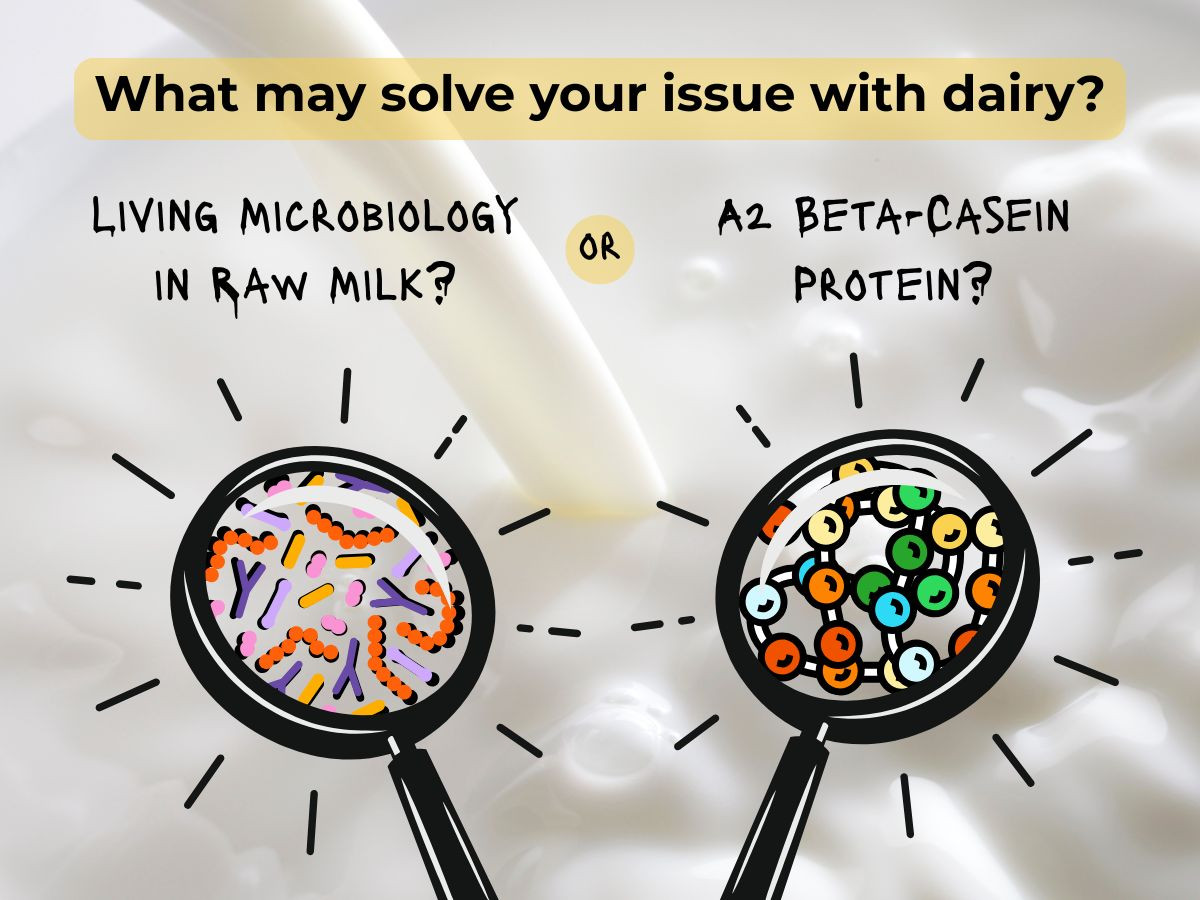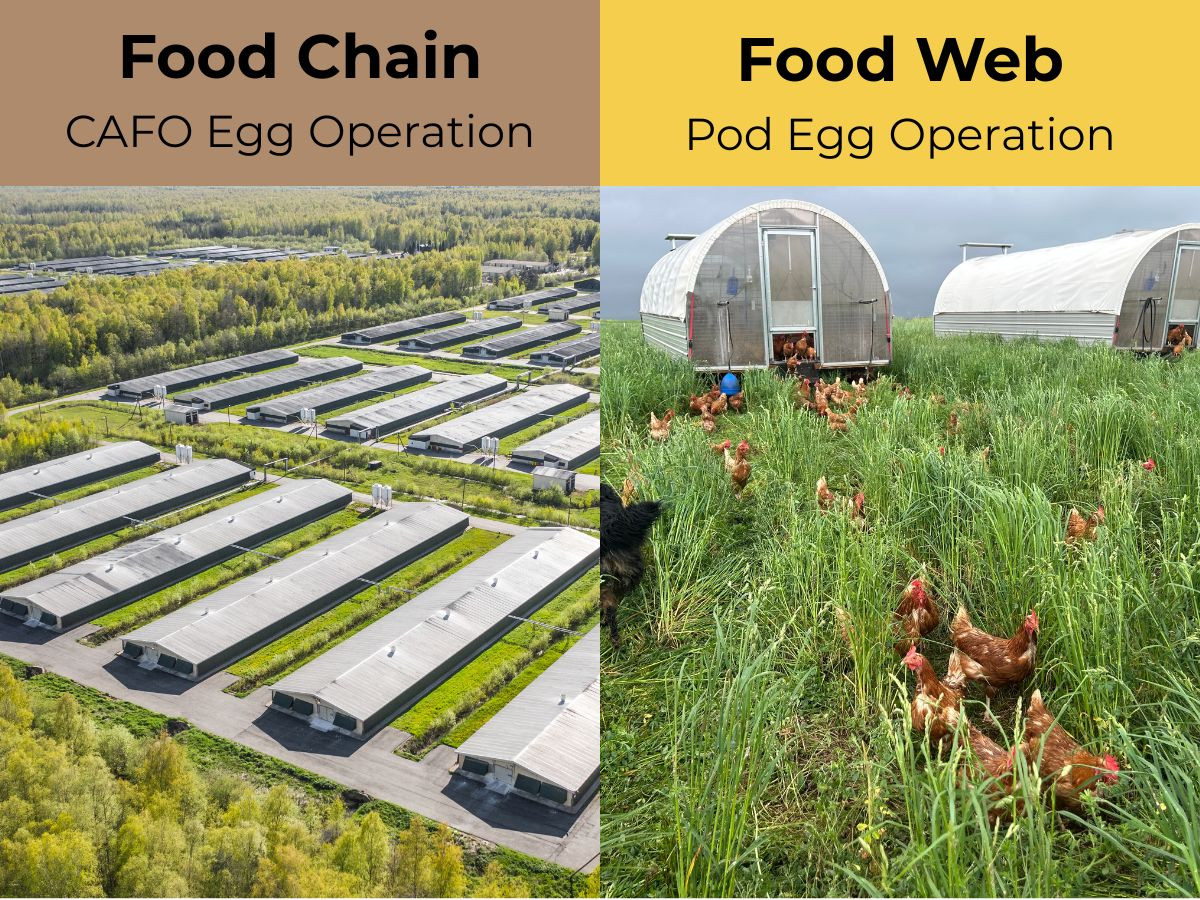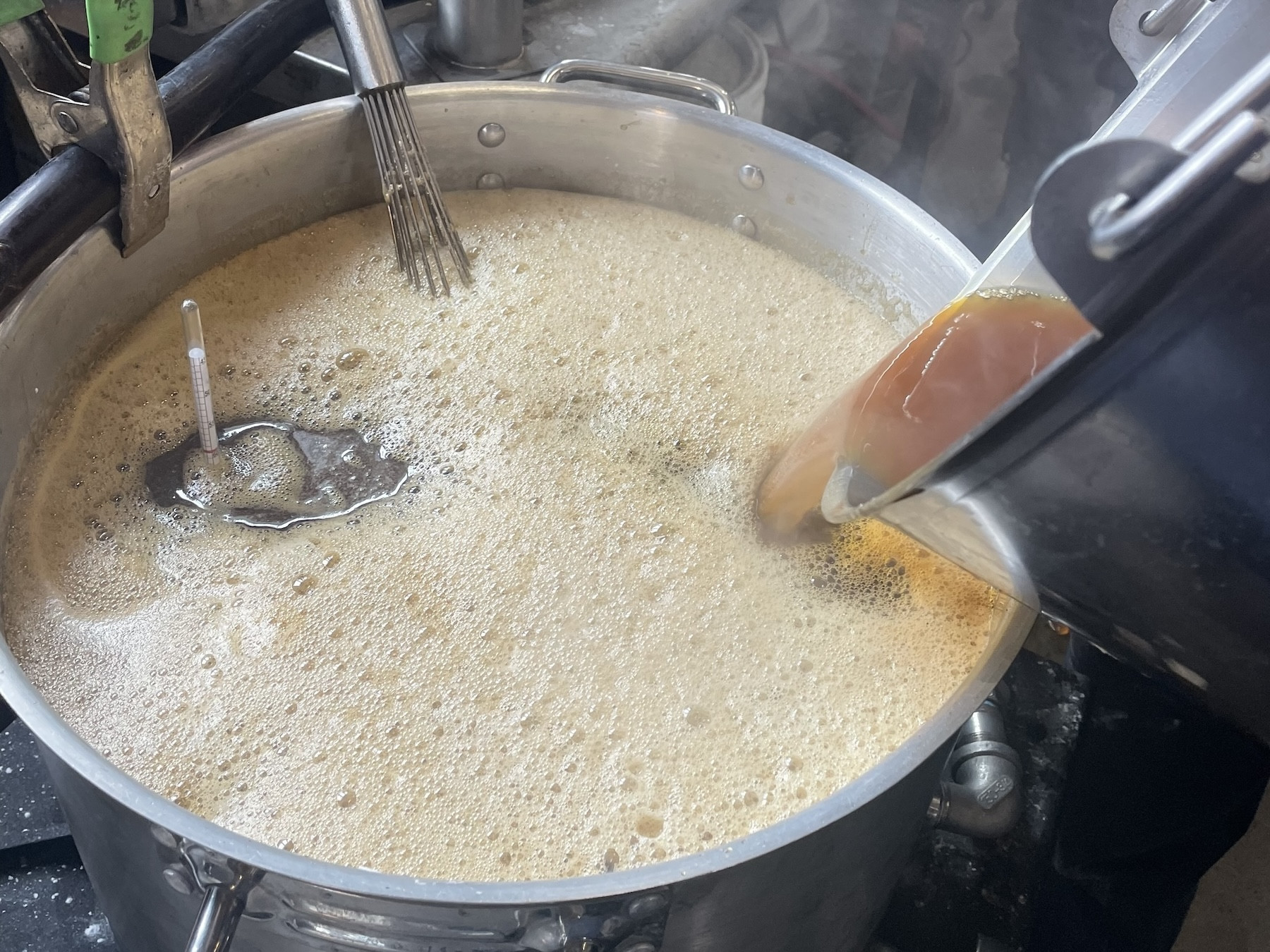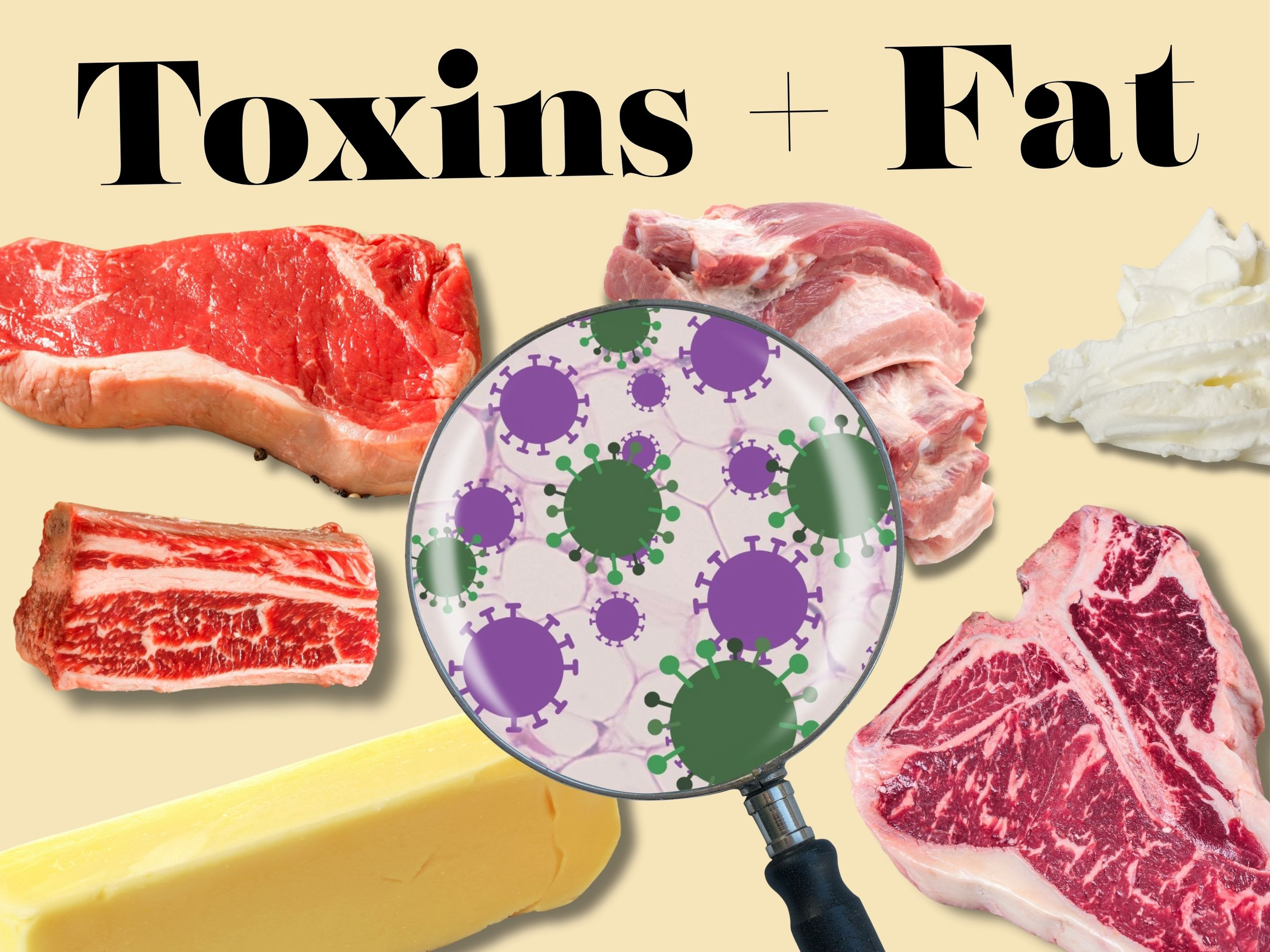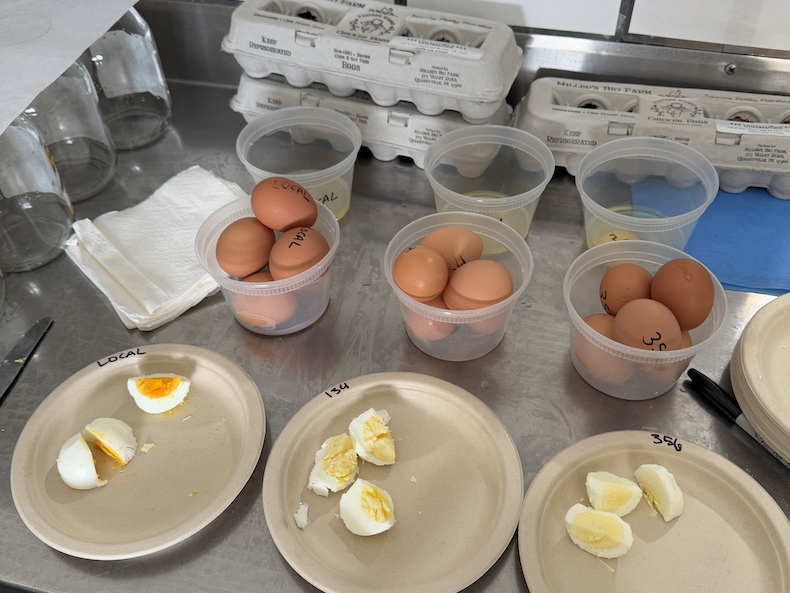Gut strengthening colostrum: What is it? Powder vs liquid? How to use it?
Colostrum is the first milk a cow produces after it gives birth. All mammals make colostrum as the "first milk". Yup, human mommies too! Also known as "liquid gold", colostrum is a super special dairy item. It's not only important for newborn health. It also has some amazing gut healing and immune boosting properties for older mammals, too. Because of this, some people choose to take colostrum as a supplement or give it to their furry family. But, gee, there are a bunch of colostrum options out there! And each has its own pluses and minuses and dosing recommendations. And, when it comes to raw liquid colostrum, there isn't much info out there at all. So, I made this resource for you that answers these questions. I hope it helps you make the best choice for you when it comes to food and natural healing 🙏 Here we go! What is colostrum? Colostrum is the first liquid a mammal produces within the first 4 days after it gives birth. You can think of it like it's a super charged milk. A mammalian body produces colostrum for good reason: It's essential for optimal newborn health. Compared to milk: Colostrum is usually thicker and more yellow.Colostrum is filled with immunoglobins to boost a baby's immune system, like 5,000%+ more. This helps protect young ones from illness. Colostrum has lots of growth factors, at least 2x more. This helps a newborn develop a strong and healthy gut.Colostrum has 2-5x as much protein. First colostrum can have up to 15% protein!Colostrum generally has more vitamins. Most notably, it has at least 47x more Vitamin E and 2x more Vitamins D and B2.Colostrum generally has more minerals, most notably it has 4x more zinc.Colostrum has more fat, at least 66% more.Colostrum at least half the amount of sugar (AKA lactose). This makes it generally easier to digest. Can see why colostrum can be called "super charged"? What's in colostrum that makes it a healing food? I could get super science-y here. But, I'll do my best to keep it simple. Antimicrobials = Enhanced Immunity and Gut Health Colostrum is packed with immunoglobins (AKA IgG antibodies) and other immune-boosting constituents like oligosaccharides, lactoperoxidase, lysozyme, and lactoferrin. Working synergistically, they help protect the body against foreign invaders like bacteria, viruses, and allergens. Getting these via colostrum can help your body learn what to do and enhance the function of your immune system! Once your body knows what to do, it can more easily do the same thing the next time. They can also help restore balance in your gut, helping keep the numbers of "bad bacteria" in check. Did you know that humans pass this antimicrobial goodness to their babies via the placenta? Cows don't do that! And that's why cow colostrum is specifically and seriously packed with antimocrobials. Immune regulators = Help Fight Infections and Restore Balance Colostrum contains immune regulators like cytokines and leukocytes. These can help prevent, treat, and even destroy harmful bacterias and viruses. Gut issues are typically fraught with an overpopulation of bad microbiology and an underpopulation of the good microbiology. Removing the bad stuff can immediately reduce inflammation. And creating better balance can allow for gut healing, Growth Factors = Promote Healing and New Growth Colostrum contains so many kinds of growth factors, from the common peptides to things that can fall into categories like glutamine, nucleotides, and polyamines to super important insulin-like growth factors, too. Growth factors do exactly what they sound like they do - they encourage growth. So let's say your gut lining is damaged (or really anything in your body is damaged), colostrum can help it rebuild more quickly. What's the difference between powdered and liquid colostrum? Liquid colostrum is simply straight colostrum. It's milked from a cow and either consumed immediately or frozen for later use. It's the purest, most bioavailable, and most potent form of colostrum. All of the healing powers are intact. Powdered colostrum (and the capsules and tablets made from it) started as frozen liquid colostrum. Then, it's generally pasteurized and freeze dried. Now both of those processes can reduce, inhibit, or destroy certain healing properties of colostrum. In short, the less processing, the more healing powers. Plus, with powdered colostrum, the final product may be altered from its original composition. For example, it might have the fat removed, or maybe they put additives in there for anti-caking, preservation, etc. This can negatively affect the synergistic healing qualities of colostrum. With liquid colostrum, is there nutritional loss with freezing? The longer colostrum is frozen, the more probiotic loss. For this reason, I don't recommend freezing colostrum for more than 3-6 months. I mean, it will still have some good stuff in it. But why waste those amazing healing properties? If choosing liquid colostrum, how much should I take as a supplement? First things first, if you're new to dairy, especially raw dairy, take it slow! You definitely don't want to shock your body, especially when you're trying to heal something. Take a teaspoon, and see how you feel over the next few days. Then slowly up the dose and reduce the timing until you find a regimen that works best for you. You can't OD on colostrum. On the other hand, a little bit goes a long way. Most people taking colostrum as a supplement use about 1-2 oz per day. It's like a daily shot of liquid gold. What's the difference between first milking and second/third milking colostrum? Well, it's just like it sounds. First milking colostrum is from the first milking after a cow gives birth. It's the most potent and contains the most healing properties. Second/third milking colostrum is from the second and third milkings after a cow gives birth. It's not as potent but still has great healing powers. You can always take more second/third colostrum to get the same benefits as first. It's also important to note that this is not an exact science. Every batch of colostrum will vary. Why? Every cow/calf combo is different. Plus, the time between birth and milking will vary. I mean, we won't know if a cow gives birth at midnight, so we can't go out there and immediately milk her on a special schedule. What about the calves? Do they get any colostrum? Of course! We know how important it is for optimal health, so the calves always get first dibs on colostrum. We take whatever is leftover, whatever they don't drink from their mom. Our colostrum inventory is always limited. This is the nature of colostrum. We can't just make more now. We need to wait for a cow to give birth. It always in and out of stock, sometimes for shorter on longer periods of time. And, if you ask when it's coming back, we may not have a direct answer. This is because we don't know the exact day cows give birth (that's nature's decision). And probably more importantly, the calf always gets first dibs. We never know how much will be left for us (sometimes there's none). The bottom line is that you've got to get our colostrum when it's available. Is colostrum part of your life? Powder or liquid? If yes, what benefits have you seen? I'd love to hear from you. Comment on the blog to share your thoughts with our amazing community, or just click reply to keep it private 😊 ----- Main Source Bovine Colostrum: Its Constituents and Uses




